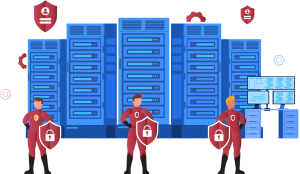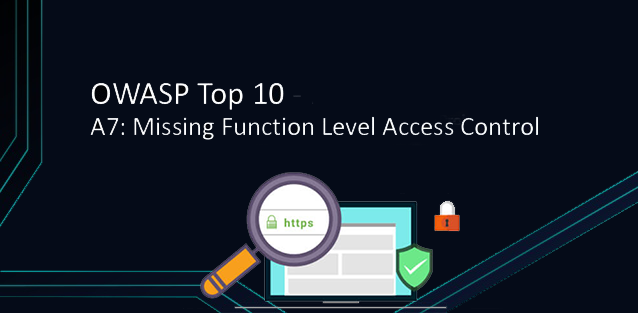Cybersecurity, one of the critical elements of our digital age, gains a new dimension with the revolutionary potential of Artificial Intelligence (AI) and Machine Learning (ML) technologies. While these technologies offer great opportunities to automatically detect and respond to cyber attacks, they also present risks of misuse and manipulation. In this article, we will discuss the role of AI and ML in cyber security, guidance for beginners in this field, and its relationship with pentesting. Additionally, we will emphasize the importance of these technologies in cyber security and their prominent usage areas.
Opportunities and Risks
Artificial Intelligence (AI) and Machine Learning (ML) offer significant opportunities in the field of cybersecurity. These technologies can strengthen security systems with the ability to quickly detect threats, respond automatically, and improve security operations. However, improper training or manipulation of AI and ML systems can lead to security vulnerabilities. Therefore, careful design and constant updating of these systems is essential.
Opportunities:
- Faster and Accurate Detection: AI and ML can detect cyber attacks and threats faster and more accurately than traditional methods.
- Automatic Response: These technologies can reduce human intervention by providing automatic responses to cyber attacks.
- Better Protection: AI and ML can provide more effective protection by predicting cyber vulnerabilities and threats.
Risks:
- False Alarms: AI and ML models can increase the workload of the cybersecurity team by producing false positives.
- Data Security: It is critical to ensure the security of the data used for AI and ML models.
- Ethical Concerns: AI and ML models can pose serious problems when used for unethical purposes.
Artificial Intelligence and Machine Learning in Cybersecurity: A Beginner’s Guide
For beginners who want to step into the field of cybersecurity with artificial intelligence (AI) and machine learning (ML), it is important to learn the basic concepts and fundamentals of these technologies. Online courses, certification programs and workshops are ideal for gaining this knowledge. Additionally, participation in open source projects and working on real-world data are great opportunities to gain practical skills.
Suggestions for Getting Started:
- Online Courses: Courses are a great way to learn the basics of AI and ML and how they can be used in cybersecurity.
- Books: Many books have been written about AI and ML. These books are a good way to learn the technical details of AI and ML and how they can be used in cybersecurity.
- Conferences and Events: Many conferences and events are organized on AI and ML. These events are a great way to learn about the latest developments in AI and ML and network with other cybersecurity professionals.
- Research: There are many research articles and blog posts on how to use AI and ML in cybersecurity. Reading these articles and blog posts is a good way to learn about the latest applications of AI and ML in this field.
- Hands-on Experience: The best way to learn AI and ML is to gain hands-on experience. You can gain practical experience using AI and ML tools and platforms.
- Cybersecurity Community: There are many communities of cybersecurity experts using AI and ML in cybersecurity. You can share your knowledge and experiences by joining these communities.
Learning AI and ML takes time and effort. However, these skills are becoming more important than ever for cybersecurity professionals. The above tips can help cybersecurity professionals start learning to use AI and ML. By learning AI and ML, cybersecurity professionals can better protect against cyberattacks and contribute to the future of cybersecurity.
Note: There are many different ways to learn AI and ML. Only a few suggestions are presented in this article.
Areas of Use and Featured Sectors
AI and ML are used in many areas in cybersecurity. These include malware detection, network security, user behavior analysis and penetration testing.
Artificial Intelligence (AI) and Machine Learning (ML) are widely used, especially in the following industries:
- Customer Operations: AI is used to automate customer service and support operations.
- Marketing and Sales: AI creates personalized marketing campaigns by analyzing consumer behavior.
- Software Engineering: ML is used to improve code quality and speed up development processes.
- Research and Development (R&D): AI plays an important role in the development of new products and technologies.
Additionally, the use of AI and ML is increasing in fields such as healthcare, finance, technology, sales and marketing. Banking, high-tech and life sciences industries are among the sectors that will be most impacted by AI as a percentage of their revenues. It is also anticipated that AI will have a significant impact on the retail and consumer packaged goods industry. These technologies have the potential to transform business processes and ways of working. AI and ML increase the efficiency and productivity of businesses, allowing them to focus on higher value tasks.
The Role of Penetration Testing in Cyber Security
Penetration testing is a controlled attack method to evaluate the cyber defenses of organizations. Artificial Intelligence (AI) and Machine Learning (ML) further enable these tests by automating pentest processes and simulating complex scenarios. Thanks to these technologies, security experts can identify vulnerabilities quickly and effectively.
Contributions of AI and ML to Penetration Testing:
- Target Detection: AI and ML can be used to detect the most at-risk areas and vulnerable systems.
- Vulnerability Scanning: These technologies can automatically detect vulnerabilities in systems.
- Attack Simulation: AI and ML can simulate realistic cyber attack scenarios.
The Importance of AI and ML in Cyber Security:
AI and ML have the potential to revolutionize the field of cybersecurity. These tools accelerate and strengthen our protection against cyber threats.
Legal and Ethical Aspects of the Use of Artificial Intelligence and Machine Learning in Cyber Security
The use of artificial intelligence (AI) and machine learning (ML) in cybersecurity raises many legal and ethical questions. In this article, we will examine some aspects of this important topic.
Legal Aspects:
- Data Privacy: AI and ML models use large amounts of data to detect cyber attacks and threats. The collection, storage and use of this data must comply with data privacy laws.
- Cyber Liability: AI and ML models can produce inaccurate or incorrect results. This situation may lead to inadequate protection against cyber attacks and material or moral damage. Therefore, those using AI and ML models are at risk for cyber liability.
- Copyright and Intellectual Property: AI and ML models may contain code and data that is copyrighted or covered by intellectual property. The use of these models must comply with relevant laws.
Ethical Aspects:
- Bias: AI and ML models can produce biased results when trained with biased data. This may leave certain groups more vulnerable to cyber attacks.
- Transparency: AI and ML models should be transparent about how they work and what data they use. This transparency increases the reliability and accountability of models.
- Human Control: AI and ML models should not be run completely independent of human control. Human control and intervention is always necessary in cybersecurity.
Possibilities of Use of AI and ML Models by Cyber Attackers
Cyber attackers can use artificial intelligence (AI) and machine learning (ML) models for a variety of purposes. Some of these purposes are:
- Target Identification: AI and ML models can be used to determine where attacks are most likely to occur and which systems are most vulnerable. Attackers can perform more successful attacks using this information.
- Vulnerability Scanning: AI and ML models can automatically scan systems for vulnerabilities. Using this information, attackers can find new ways to infiltrate systems.
- Simulating Attacks: AI and ML models can be used to create simulations that mimic real cyber attacks. Using these simulations, attackers can test defense systems and identify their weaknesses.
- Social Engineering Attacks: AI and ML models can be used to create more convincing and personalized social engineering attacks. Using these models, attackers can deceive people and obtain sensitive information.
- Data Theft: AI and ML models can be used to analyze large amounts of data quickly and automatically. Using these patterns, attackers can steal sensitive data and use it for identity theft or other illegal activities.
- Cyber Warfare: AI and ML models can be developed for use in cyber wars. Using these models, attackers can damage critical infrastructure or infiltrate government institutions.
The use of AI and ML models by cyber attackers poses a new and significant threat to cybersecurity. To meet this threat, it is important for cybersecurity professionals to understand how AI and ML models work and how they can be used in cyber attacks.
Note: AI and ML models can be used by cyber attackers in many different ways. Only a few possibilities are discussed in this article.
Collaboration with Secromix Cyber Security Company
In your cyber security journey, Secromix Cyber Security company supports you in protecting against cyber attacks using AI and ML technologies. The penetration testing services offered by the company help you identify your security vulnerabilities and close these vulnerabilities. Additionally, with AI-supported security solutions, you can detect threats in real time and respond quickly.








